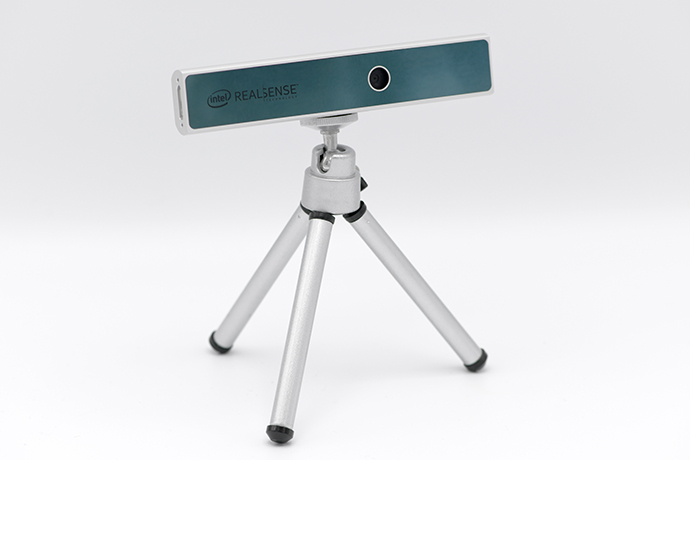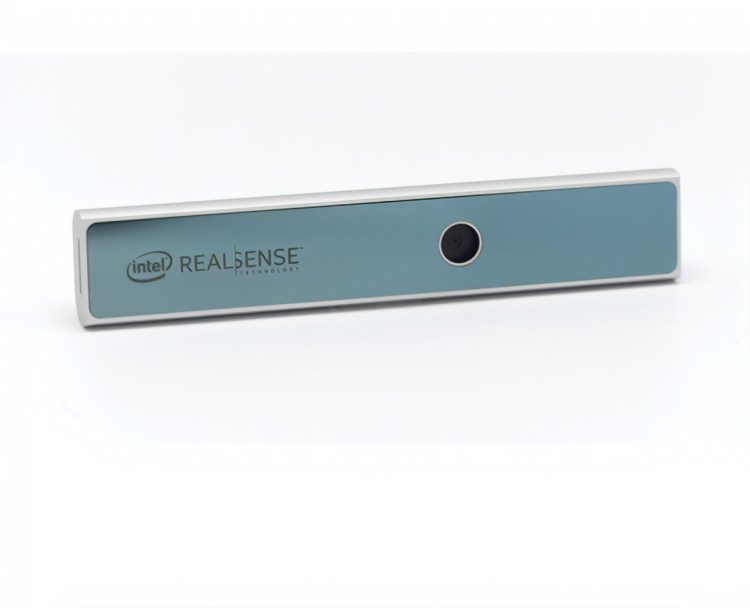Watch all the Transform 2020 sessions on-demand here.
Intel’s RealSense Technology, a suite of solutions designed to imbue machines with depth perception and object tracking capabilities, welcomed a new member to the family this afternoon. In a blog post, the Santa Clara chipmaker took the wraps off of the Depth Camera SR305, a standalone short-range coded light camera with a “streamlined” form factor and integrated application-specific integrated circuit (ASIC) for depth calculations.
Intel says the SR305 is best suited for applications such as face analytics and tracking, scanning and mapping, scene segmentation, hand and finger tracking, and augmented reality. Like other RealSense products, it supports the open source RealSense software development kit, and software developed for it can be ported to other RealSense products. Moreover, Intel says the camera is “precisely calibrated” at the factory to eliminate the need for calibration with high-power system-on-chips and video cards.
The SR305 costs $79 and is available for pre-order now, Intel says.

June 5th: The AI Audit in NYC
Join us next week in NYC to engage with top executive leaders, delving into strategies for auditing AI models to ensure fairness, optimal performance, and ethical compliance across diverse organizations. Secure your attendance for this exclusive invite-only event.
As of January 2018, devices in Intel’s RealSense portfolio include the Vision Processor D4, a range of 28-nanometer vision processors designed to compute real-time stereo depth data; Depth Module D400 Series, which feature active IR or passive stereo depth technology, rolling or global shutter image sensor technology, and wide or standard fields of view depending on the configuration; and two ready-to-use depth cameras in the D435 and D415.
Intel unveiled one of the latest additions to RealSense in January. Dubbed the T265 tracking camera, it leverages the chipmaker’s Movidius Myriad 2 vision processing unit (VPU), ambient light captured with two fish-eye lenses, and simultaneous localization and mapping algorithms to spot objects and help machines like robots and drones keep track of their precise locations in an environment. It went on sale in February for $199.
Previous generations of Intel’s RealSense depth cameras were built into laptops and tablets from manufacturers including Asus, HP, Dell, Lenovo, and Acer. Additionally, Razer and Creative offered consumer-ready standalone webcams sporting RealSense technologies.


